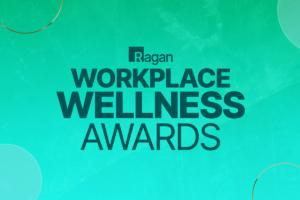Recognizing and preventing burnout in the workplace
Advice on identifying the signs of burnout and supporting employees affected by it.

In 2022, levels of burnout in America hit a high that even surpassed levels during the Covid lockdown. As we returned to offices and lockdowns were lifted, rates of burnout increased from 52% to 59%, marking a rise in stress and demotivation.
This tells us one thing pretty clearly: Covid wasn’t the problem.
The way we live and work in the busy modern world isn’t sustainable. As HR or communications professional, though, you can make changes to alleviate the burden of burnout and create a healthier, happier workplace. Here is some actionable advice to help you get started.
Why should you worry about burnout?
Burnout is a danger to businesses in more ways than one. By pushing employee mental health to one side, you’re likely to see an increase in:
● Poor work performance
● Job dissatisfaction
● Absenteeism
● Poor co-worker relationships
You’re basically sending your staff down a one-way path to finding a new job. All of this will leave your company out of pocket, too, with burnout costing global businesses an estimated $322 billion a year.
Signs of burnout in employees
As an HR or communications manager, it’s your job to look after the mental health of your employees. That all starts with being able to identify when something’s wrong. In terms of burnout, there are plenty of signs that you should look out for that’ll tell you that someone’s struggling. These include:
● Uncharacteristically poor job performance (e.g. making mistakes, missing deadlines, or not completing tasks)
● Irritability
● Frequently distracted
● Signs of fatigue
● Sudden changes in mood (e.g. outbursts of anger or sadness)
● Withdrawing socially at work
● Frequently absent from work
Of course, sometimes being tired and angry is just someone having an off day or a bad week. But if you ever see even a few of these symptoms in a member of your staff, it’s always better to address it than leave it.
Remember, too, that burnout spreads. If one employee seems to be experiencing it, it signals a problem with your work environment that’s likely to trigger burnout in others. Helping your employee quickly could save the mental health of many others.
How to talk about burnout with an employee
If you do think someone is struggling with burnout, arrange a time to talk to them privately. It’s better if this isn’t in a professional meeting as that can add to the individual’s stress, but instead in a casual setting. Find them over lunch or invite them to sit down for a coffee and let them know that you wanted to make sure they’re okay.
Ask questions that are helpful rather than accusatory. Once you identify whether or not they’re feeling low or stressed, base your questions on what your company can do to alleviate the problem, like:
● What can we do to create a better work environment for you?
● How can we help you find the motivation and peace that you need?
● How can we stop this from happening again in the future?
It’s important your employee feels listened to and understood. Showing any signs of annoyance or anger is likely to shut down the conversation and make them more inclined to look for a job elsewhere.
Create a burnout protocol
Every case of burnout is slightly different. But, if an employee comes to you with burnout and doesn’t know what to do about it, it’s smart to have some steps already in place that you can both follow.
The first would be to give the individual some time off. Either encourage them to take a few holiday days or put them on sick leave. This will give them some time to unwind and breathe and show them that you’re taking their mental health seriously.
Often, burnout is related to the tasks an individual is doing. If they’re overworked, look to lighten their load and have a manager above them take some of the burden. Sometimes, this can be as simple as a manager giving them a couple of daily tasks rather than the employee being responsible for managing their entire workload.
Variation is also key in preventing burnout. Ask your employee if they’d like to shake up their work a little and incorporate some new, different tasks into their day.
If their mental health has really suffered, it’s wise to direct the employee to find professional help. Particularly, they should look for those that offer a holistic approach to stress and burnout, like a rehabilitation facility with hiking and outdoor activities.
Preventing burnout in your team
Though burnout is on the rise, it’s fairly easy to keep at bay in the workplace once you know what you’re doing. Key steps to prevent workplace burnout include:
● Encouraging laughter and conversation in the workplace
● Ensuring your staff get time in the day for a good break
● Implementing mental health days
● Allowing for flexible work hours and remote work where possible
● Offering leveling-up opportunities in-house
● Ensuring a varied workload for every member of staff
It’s also important to talk to and listen to your staff before burnout becomes an issue. Let them know that you have a positive approach to mental health and that if anybody is struggling, they can come to you or a senior member of staff without worrying about their job.
Check-in with your team to see how everyone is doing and whether anything in the workplace needs to change. Encourage empathy and teamwork, and ensure all employees know that if they need a break, that’s okay.
Work should never come before mental health, and with these strategies, you’ll ensure your fellow employees know that. Just remember always to listen, be aware of the signs, and encourage an open conversation around burnout.
Gemma Williams is an HR and career consultant.
COMMENT
Ragan.com Daily Headlines
RECOMMENDED READING
Tags: burnout






